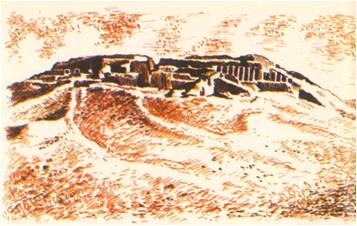Two hundred years before Columbus discovered America, a certain Marco Polo told strange, exciting stories to his friends and neighbours in Venice, a city in northern Italy. He had travelled, he said, to distant lands in Asia and had become rich. Europeans at that time had some general knowledge of eastern Asia and of its products, but Polo furnished detailed and colourful descriptions of magnificent cities, of strange customs and of powerful rulers who owned many palaces and lived in unheard of luxury. Marco Polo had visited the court of the khan, or ruler, of an empire that included most of east Asia as well as great islands in the Pacific and Indian Oceans. Polo had been made a public official. He had been sent on errands to the cold wastes of present day Siberia and the green Spice Islands where it was always warm. He had seen civilizations of many kinds — some primitive, some more magnificent than those in Europe. Marco Polo’s stories were so amazing that not until long after his death did most people believe them. “How,” thought Europeans, “could Asians have travelled so far on the long road from savagery without our help?” Today we know that Marco Polo’s stories were true, atleast in all important respects. We know that while Egyptians were building their pyramids and the Sumerians their temple towers in Mesopotamia, civilization was growing in India. We know also that while the Greeks and Romans were creating “the glory that was Greece and the grandeur that was Rome,” the Chinese were developing their own civilization and way of life. You will not find the empire of Alexander or the Roman Empire on a modern map of the world, as you know, but India and China still exist. Many changes have taken place …
Read More »The Six Dynasties: Turmoil and Change A.D. 220-589
THE three states into which China had split were soon split up themselves into even smaller divisions. For three and a half centuries, war raged almost continuously among rival kings. Doubt and confusion were everywhere. The period between 220 and 589 is called the Six Dynasties era, after six ruling families in a row which used Nanking as their capital. In all those years‚ the memory of the Han Empire never died. Looking back longingly at the peace and order of that time, the people came to think of the Han government as the great model which all rulers should try to copy. With the country divided, it was easy for the barbarians to invade. During the fourth century, wave after wave of nomads rolled south across the North China Plain, as the Huns were joined by their relatives, the Mongols and the Turks. Riding swift ponies, the invaders mowed down the Chinese foot soldiers with deadly arrows from their crossbows. Huge numbers of Chinese fled-some to Kansu in the northwest and Szechwan in the west, but many more to the lands south of the Yangtze River. The Chinese population of south China doubled, tripled and quadrupled, until it overwhelmed the non-Chinese population. Even in north China the Chinese greatly outnumbered their barbarian conquerors. Due to this and because the Chinese system of government was much better suited than theirs to a country of farmers, the newcomers gradually adopted Chinese ways. THE SEVEN SAGES Chinese ways were themselves changing. Just as the rebellions, wars and invasions uprooted millions of people from their settled lives on the land, so they uprooted the beliefs by which these people lived. These beliefs, Confucianism and Taoism, were mainly rules for everyday living. They had worked well enough in orderly Han times, but they no …
Read More »Civilization comes to India 3500 B.C to 200 B.C.
For thousands of years during the Stone Age, only scattered groups of people had lived in India. With only the simplest tools of bone, wood and stone, they hunted and gathered food. Cut off from other peoples by the mountain and the sea, the first Indians made few advances in their primitive way of life. Then, sometime between 3500 B. C., new settlers began to appear along the Indus River Valley in northwestern India, a region that would be called West Pakistan thousands of years later. It seems almost certain that these newcomers were from the mountains and plateaus to the northwest, the modern lands of Iran and Afghanistan. When they arrived, the new commers were already able to make pottery, to farm and to raise animals. Most likely too, some of them knew of the cities far to the west, on the plains of Mesopotamia. From those more advanced cities, the Indus valley people learned about new objects, such as copper and bronze tools. They also heard tales about how those distant peoples controlled the river’s water, or how they scratched signs in clay tablets to record words. However much they may have borrowed, the Indus Valley people worked out their own ways. By 2500 B. C., a distinctive civilization had begun to develop along the Indus River. The river itself played an important part in this civilization. Sometimes it flooded so badly that it wiped out villages and fieldworks, or even changed its course entirely. Usually however, it overflowed just enough to leave a rich soil for each season’s crops and the people worked together to take advantage of it. The river also made it easy for the various settlements to exchange goods and ideas. The People of the Indus Of the dozens of villages, two soon grew …
Read More »


